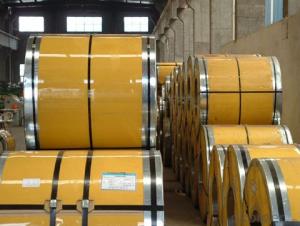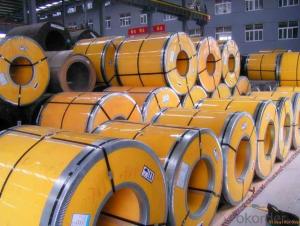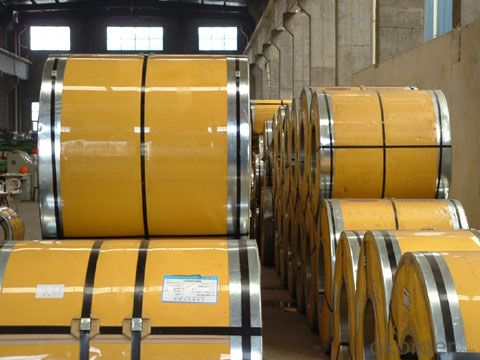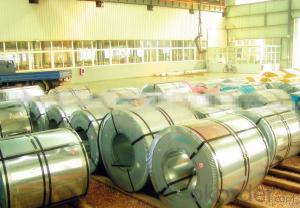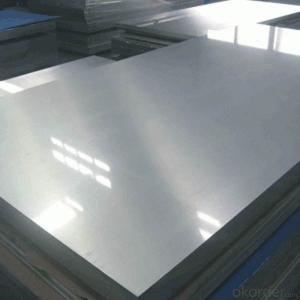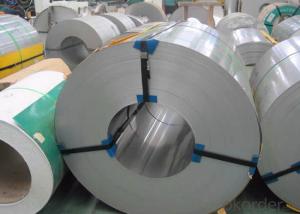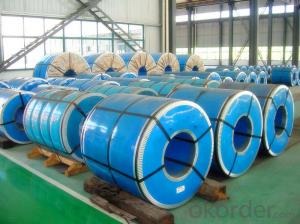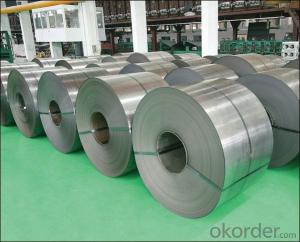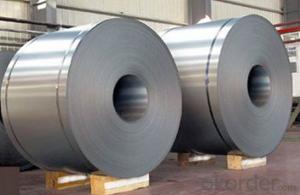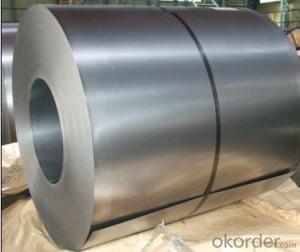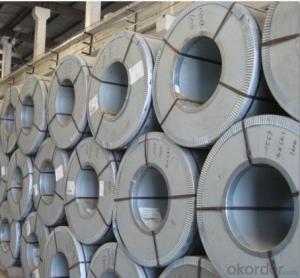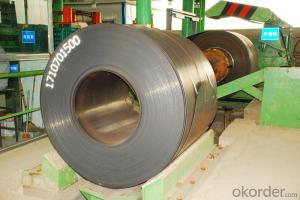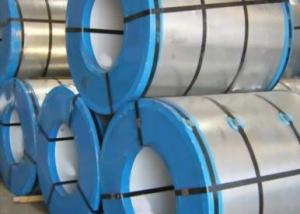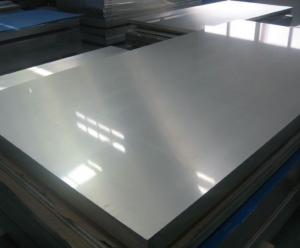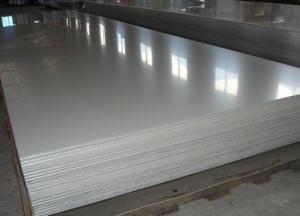Stainless Steel Coil 201 Hot Rolled Narrow Coil J1
- Loading Port:
- Lianyungang
- Payment Terms:
- TT OR LC
- Min Order Qty:
- 400 m.t.
- Supply Capability:
- 8000 m.t./month
OKorder Service Pledge
OKorder Financial Service
You Might Also Like
Hot Rolled Stainless Steel Coil 201 Narrow/Wide Strip No.1 Finish
Packaging Detail: For customer's requirement
Delivery Detail: 10-30days
201 Hot Rolled Stainless Steel Coil Specifications
THK:2.3/2.5/3.0/4.0mm
Width:485/510/550/610/1010/1240mm
Face:No.1
201 Hot rolled stainless steel Coil Application
Stainless steel is a production which not easy rust,acid resistance and corrosion resistance,so it is widely
used in light industry,heavy industry,daily necessities and the decoration industry.
201 Hot Stainless Steel Coil Chemical Composition(WT%)
(C):≤0.15, (Si):≤0.75, (Mn):5.5~7.50, (Cr):16.0~18.0, (N):≤0.25, (Ni):3.50~5.50, (P):≤0.060, (S):≤0.030
201 Hot Rolled Stainless Steel Coil
Strength Of Extension:100,000 To 180,000 Psi;
Yield Strength:50,000 To 150,000 Psi
Elongation :55 To 60%;
Modulus Of Elasticity:29,000,000 Psi;
Density :.280lbs/Cubic Inch(7.93g/Cm3)
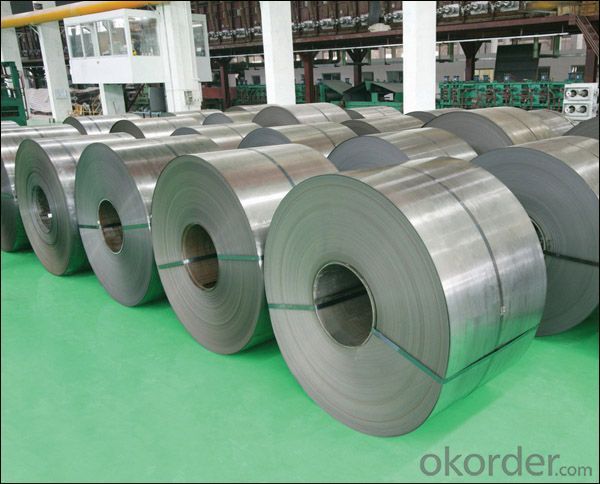
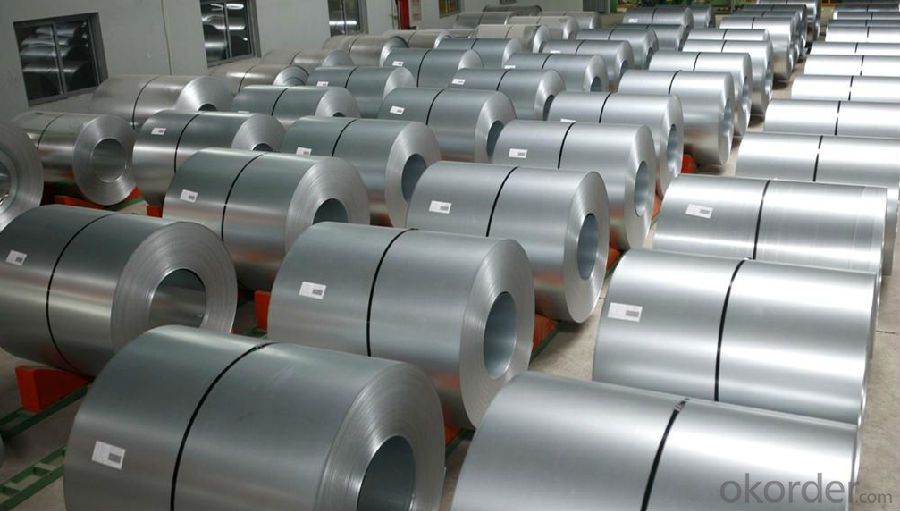
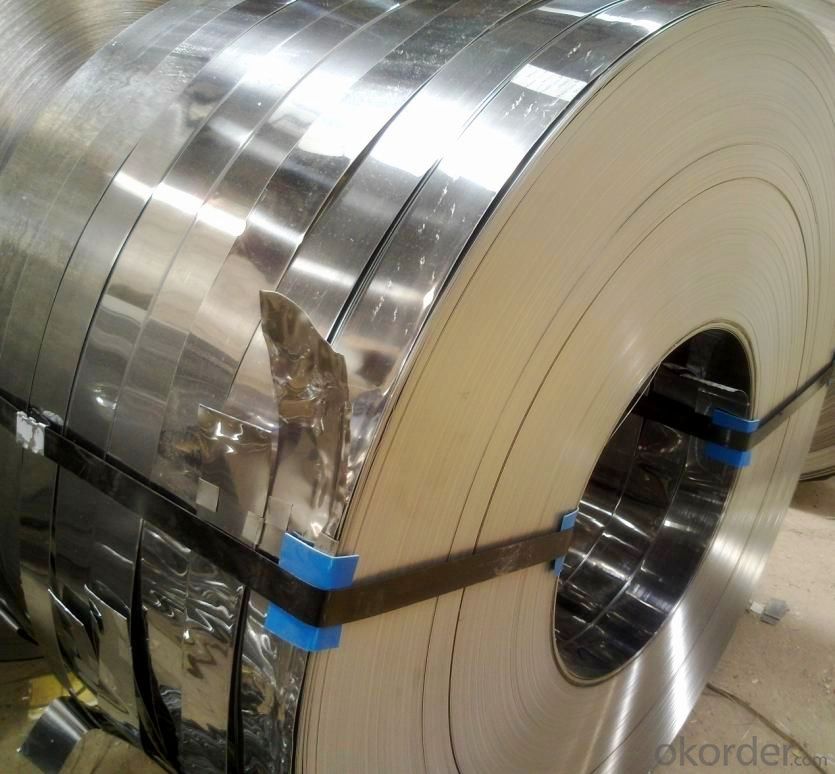

- Q: Can stainless steel strips be used in heat exchangers?
- Yes, stainless steel strips can be used in heat exchangers. Stainless steel is a common material used in heat exchangers due to its excellent corrosion resistance, high heat transfer efficiency, and ability to withstand high temperatures. Stainless steel strips offer flexibility in design and can be easily formed into various shapes, making them suitable for heat exchanger applications.
- Q: What are the different types of stainless steel strips?
- There are several different types of stainless steel strips, including austenitic, ferritic, martensitic, and duplex stainless steel strips.
- Q: What is the maximum length available for stainless steel strips?
- The maximum length available for stainless steel strips can vary depending on the manufacturer and the specific requirements of the project. However, stainless steel strips are commonly available in lengths up to 20 feet (6.1 meters) or even longer.
- Q: Can stainless steel strips be used in the petroleum industry?
- The petroleum industry can make use of stainless steel strips. Stainless steel, renowned for its exceptional resistance to corrosion, is highly suitable for various applications in this industry due to its capability to withstand the damaging effects of harsh chemicals and corrosive surroundings. Stainless steel strips are commonly employed in the construction of storage tanks, pipelines, and other equipment used in the extraction, refining, and transportation of petroleum products. The reliability and strength of stainless steel render it a dependable choice for enduring the extreme conditions and pressures frequently encountered in this industry. Moreover, the resistance of stainless steel to temperature fluctuations and its ability to maintain its structural integrity even in high-temperature environments further enhance its appropriateness for utilization in the petroleum sector.
- Q: What are the typical tolerance levels for stainless steel strips?
- The tolerance levels for stainless steel strips can vary depending on the specific requirements and applications. However, there are some typical tolerance levels that are commonly used in the industry. In terms of thickness, the tolerance levels for stainless steel strips are generally specified in terms of a plus or minus tolerance. For example, a typical tolerance for a stainless steel strip with a thickness of 0.025 inches might be +/- 0.001 inches. This means that the actual thickness of the strip can range from 0.024 inches to 0.026 inches. Similarly, the width tolerance for stainless steel strips is also typically specified as a plus or minus tolerance. For instance, a common tolerance for a strip with a width of 1 inch might be +/- 0.005 inches. This means that the actual width of the strip can range from 0.995 inches to 1.005 inches. The length tolerance for stainless steel strips can also vary depending on the specific application. However, it is common for length tolerances to be specified in terms of a maximum deviation rather than a plus or minus tolerance. For example, a typical length tolerance for a stainless steel strip might be +/- 0.010 inches. It is important to note that these tolerance levels are just examples and can vary depending on the specific requirements of the application. It is always recommended to consult the manufacturer or supplier of the stainless steel strips to determine the appropriate tolerance levels for a particular application.
- Q: Are stainless steel strips suitable for food processing?
- Yes, stainless steel strips are highly suitable for food processing. Stainless steel is widely used in the food industry due to its exceptional properties such as corrosion resistance, durability, and ease of cleaning. It is a non-reactive material, meaning it does not release any harmful substances or alter the taste of the food being processed. Stainless steel also has a smooth surface that prevents the accumulation of bacteria, making it hygienic and safe for food processing. Additionally, stainless steel strips can be easily fabricated into various shapes and sizes, making them versatile for different food processing applications such as cutting, slicing, and forming. Overall, stainless steel strips are an excellent choice for food processing due to their suitability, safety, and reliability.
- Q: Are stainless steel strips suitable for artistic installations?
- Yes, stainless steel strips are suitable for artistic installations. It is a versatile and durable material that can be shaped, manipulated, and polished to create various artistic designs. Its resistance to corrosion and ability to withstand different weather conditions make it an ideal choice for both indoor and outdoor installations. Additionally, stainless steel's sleek and modern appearance can enhance the aesthetic appeal of artistic installations, making it a popular choice among artists and designers.
- Q: Are stainless steel strips resistant to chemicals?
- Yes, stainless steel strips are generally resistant to chemicals. Stainless steel is known for its corrosion resistance, which is due to the presence of chromium in the alloy. The chromium forms a protective layer on the surface of the steel, making it resistant to oxidation and staining. This protective layer also helps to prevent the steel from reacting with chemicals and corrosive substances, thereby making stainless steel strips highly resistant to chemical damage. However, it is important to note that the extent of resistance can vary depending on the specific grade of stainless steel and the type of chemical it is exposed to. In some cases, certain chemicals or concentrations may still cause corrosion or damage to the stainless steel. Therefore, it is always recommended to consult with the manufacturer or a corrosion specialist to ensure the appropriate grade of stainless steel is chosen for specific chemical environments.
- Q: What are the main properties of 111 stainless steel strips?
- The main properties of 111 stainless steel strips include high corrosion resistance, excellent mechanical properties, and good formability. These strips are made from austenitic stainless steel, which contains high levels of chromium and nickel. The high chromium content provides superior resistance to corrosion, making it suitable for various applications in industries such as automotive, aerospace, and construction. Additionally, 111 stainless steel strips possess excellent mechanical properties, such as high tensile strength and good impact resistance. This makes them ideal for applications that require strength and durability. Moreover, they exhibit good formability, allowing for easy shaping and fabrication into desired forms or components. Overall, 111 stainless steel strips offer a combination of corrosion resistance, mechanical strength, and formability, making them versatile and widely used in various industries.
- Q: Can stainless steel strips be cold rolled?
- Yes, stainless steel strips can be cold rolled. Cold rolling is a process that involves passing the stainless steel strip through a series of rollers at room temperature to reduce its thickness and improve its surface finish. This process is commonly used to produce stainless steel strips with precise dimensions and enhanced mechanical properties.
Send your message to us
Stainless Steel Coil 201 Hot Rolled Narrow Coil J1
- Loading Port:
- Lianyungang
- Payment Terms:
- TT OR LC
- Min Order Qty:
- 400 m.t.
- Supply Capability:
- 8000 m.t./month
OKorder Service Pledge
OKorder Financial Service
Similar products
Hot products
Hot Searches
Related keywords
